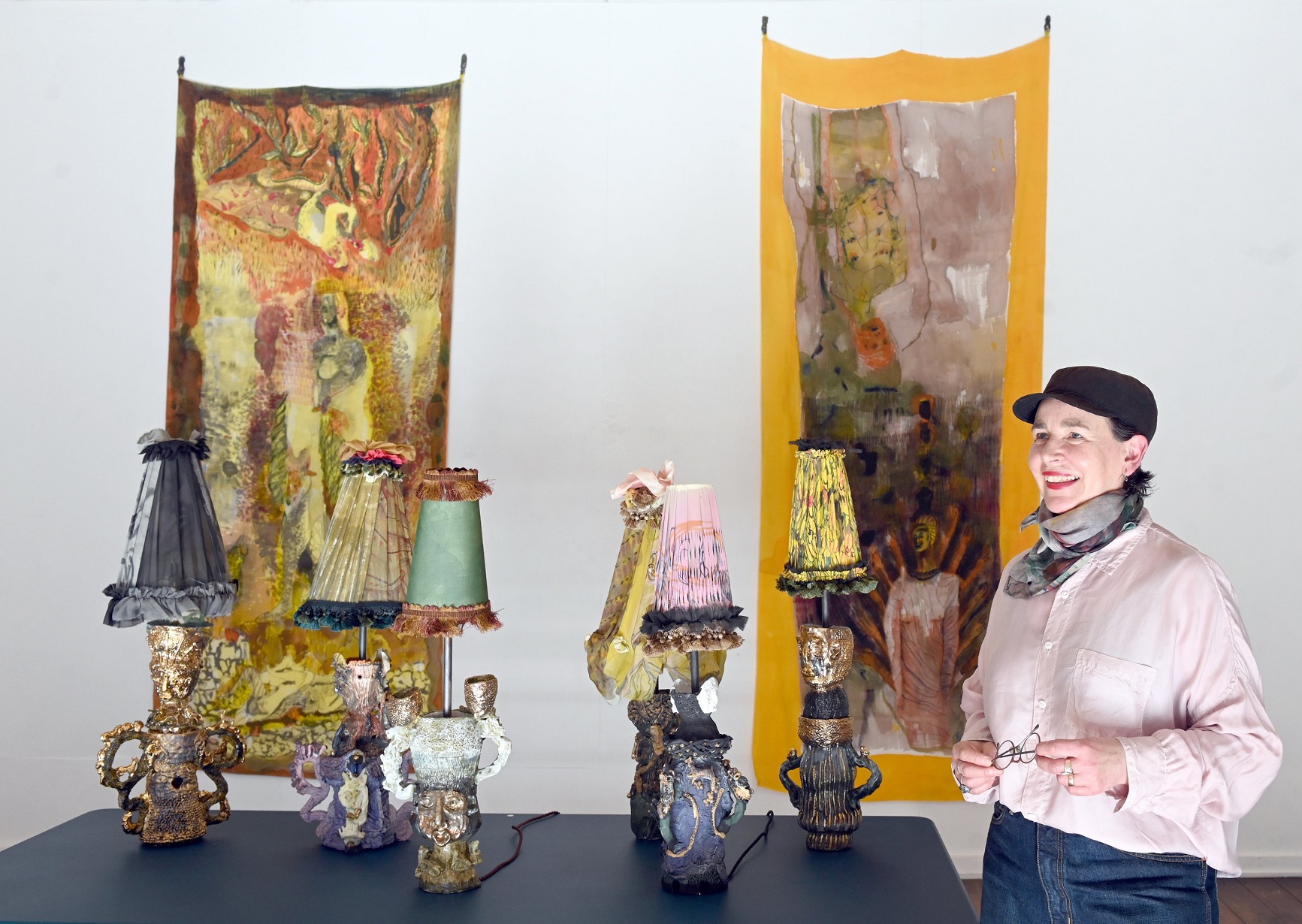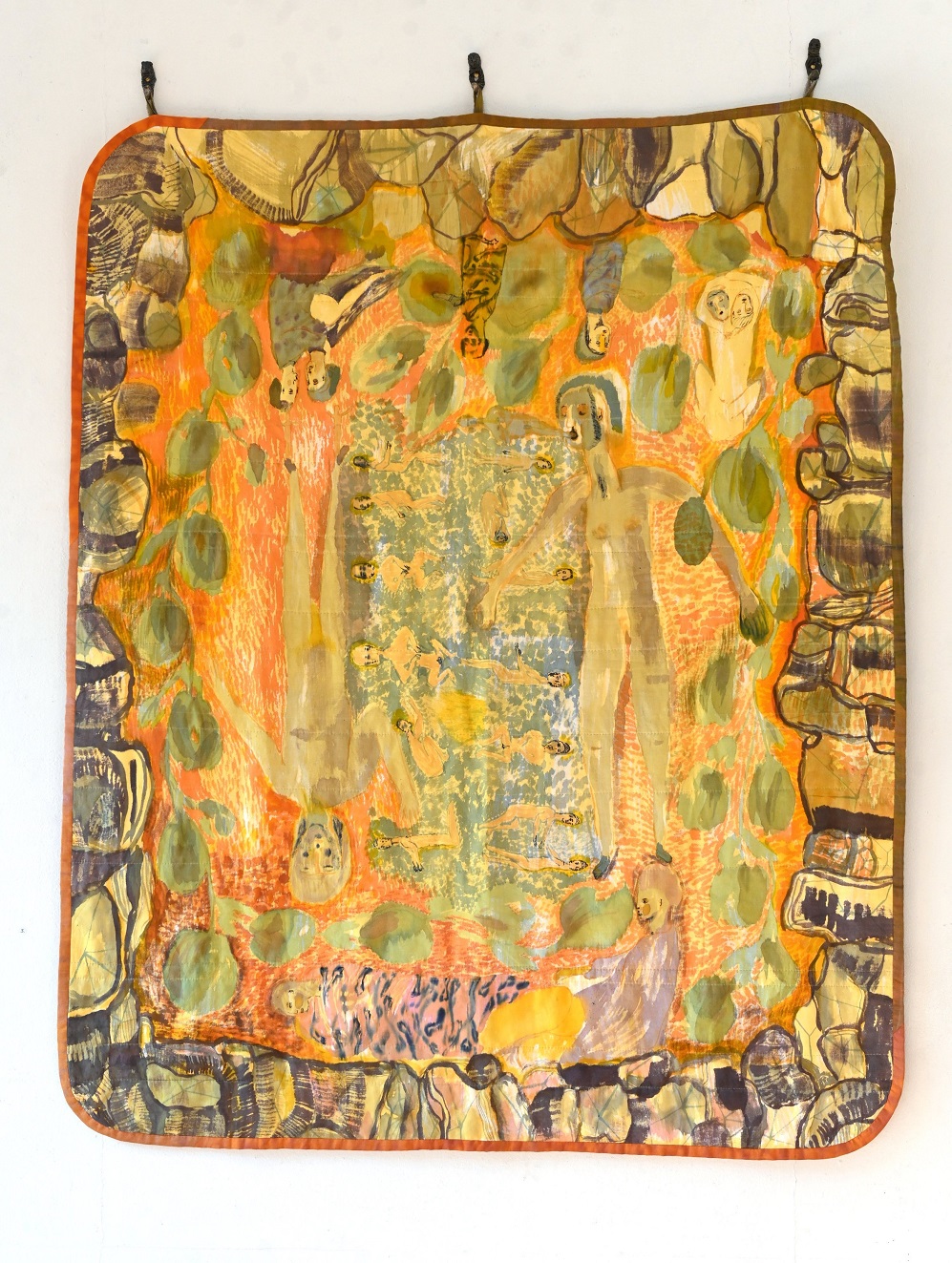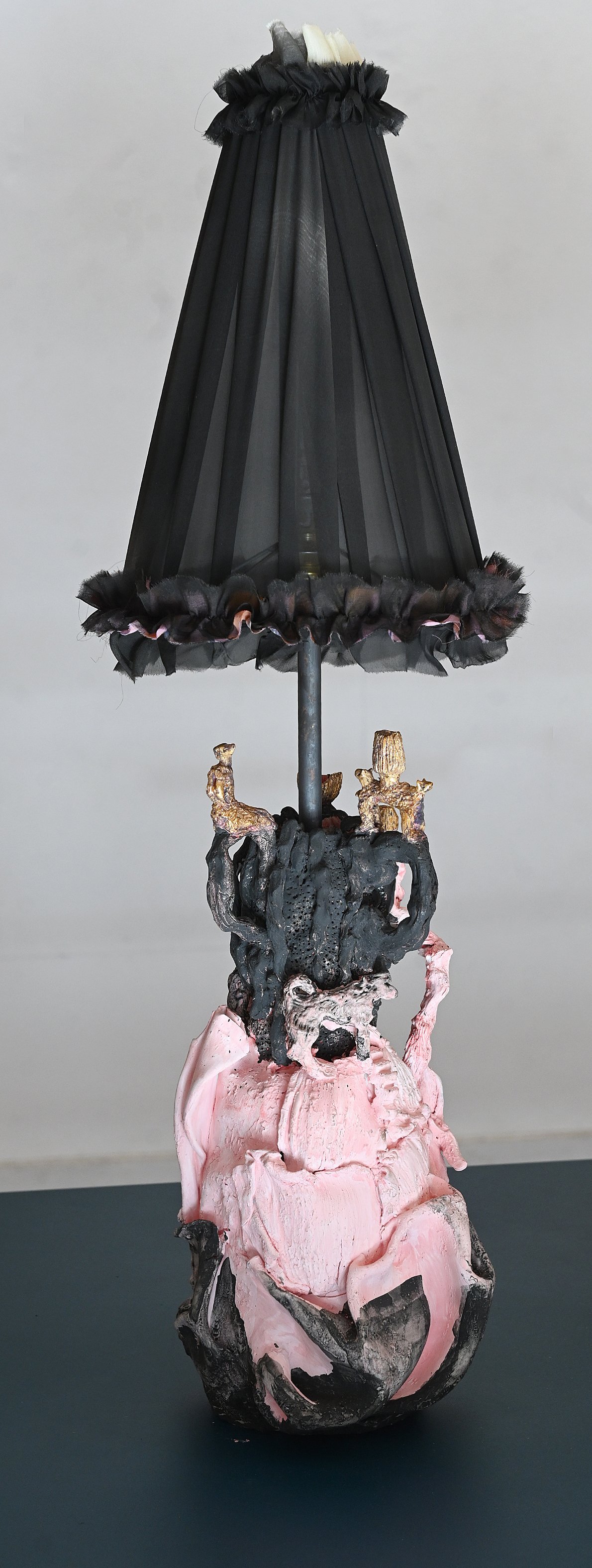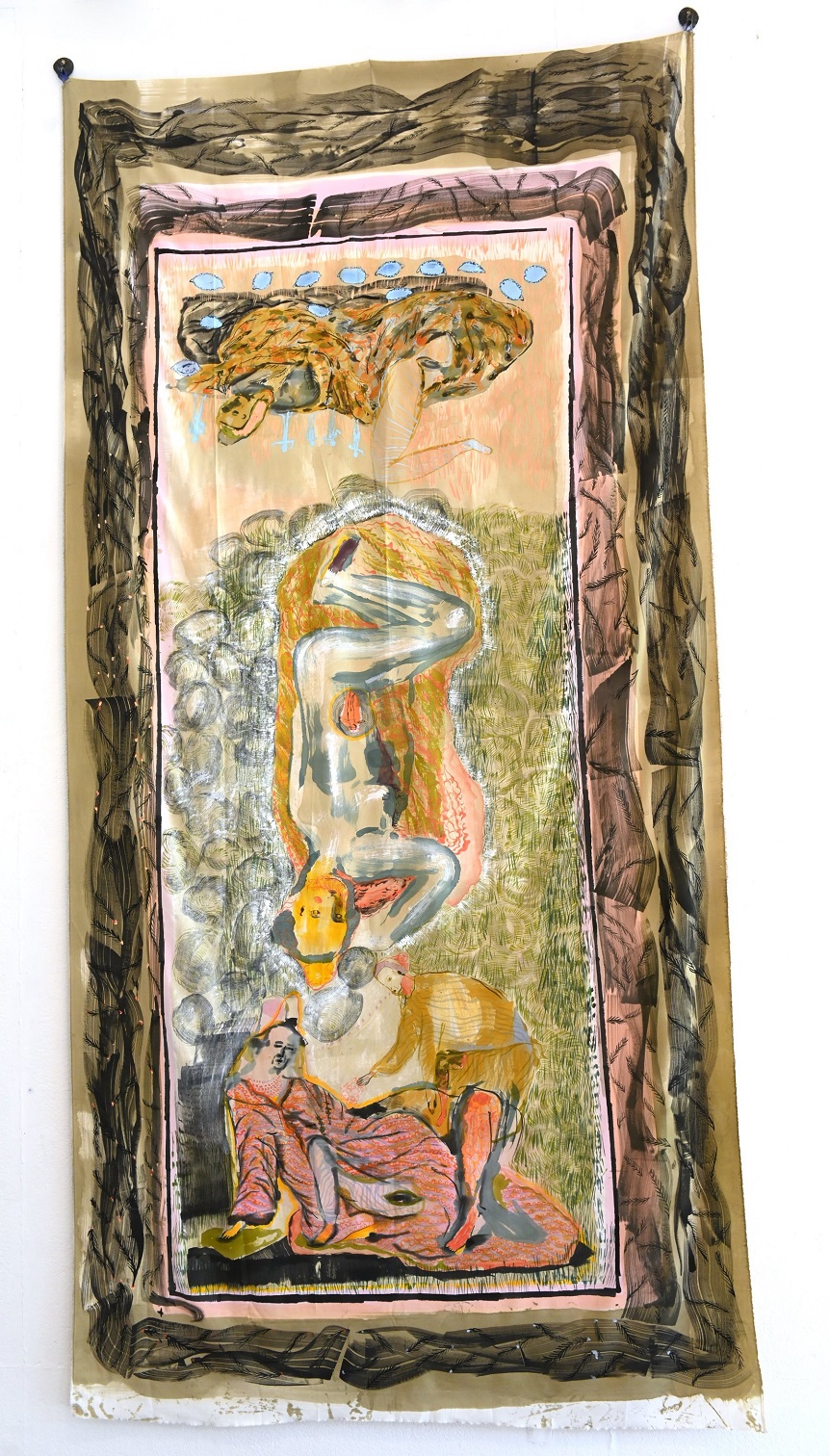
Nichola Shanley is open about being quite manic.
When the mood takes her she will work 24 hours a day, seven days a week for a year if that’s what it takes, then she might have six months of not doing much.
"I’m either off or on. I’m like that as a human being, too."
After babysitting her sister’s Dunedin studio earlier this year she admitted she had worked all day and night on a silk painting.
"You don’t want to stop. You are up there in your pjs at midnight trying to work out stuff. It’s an obsession."
Sitting still does not come naturally as a result. She is constantly moving, standing up, cradling her cup of water or re-tying her scarf.
Part of it is nerves about exhibiting her latest work at Brett McDowell Art Gallery, in her fourth show — her voice is croaky as a result, she says.
"I’m not sick, I’m terrified. Brett has always been my dream, because of his stable, its Dunedin, its street, its outlook."
She gets up and grabs a large green bag. In seconds it is upturned and its contents fall on the floor. These are some of her silk painted panels she plans to exhibit and bags she has created with artist Bekah Carran. They are a development on the silk scarves she and Carran made last year that could be hung but then taken down and worn.
"For the first time I’m showing these big paintings."
The panel is laid out displaying her hand-painted drawings filled with whimsical creatures and figures in colours described by Lyttelton arts writer Jane Wallace as "slightly medieval or symbolically rich: papal yellow, rust, aubergine, dark hues close to black, rust, aubergine, earthen green and exalted pink".
Shanley describes them as "slight eccentric" and very intuitive.
Next Shanley whips it up and throws it around her shoulders tying it as one would a scarf.
"I’d wear this, I’d love people to wear them, they won’t. It crosses the line. If they were on canvas they’d be a completely different price. Being on fabric they are completely devalued."

"I’m obsessed by how we live domestically."
Her last exhibition featured wall-mounted lights, this latest one table lamps. The "grotesque" porcelain bases contrast with the "demented French lingerie" silk painted shades featuring figurative scenes, teeming with animals and flora brought to life by just a tiny bulb.
"Electricity terrifies me, so if we could I’d just have candles, so I love these lamps I’ve made as they’ve just got little sewing machine bulbs in them, so they are very low."
The lamps are a collaboration — an artist friend who is an electrician wired them up, a friend’s father made the shade frames and another created the shades from her paintings.
"I’ve given people quite a lot of autonomy. That’s terrified me, but I love what’s happened. The lampshades are very at odds with the bases but they work beautifully."
It takes her a year to pull together a show and she admits to always making more than is needed.
"For me it is a performance. It’s quite theatrical. It’s like you are setting a stage. You are creating this other world someone goes into."
To get to this point has been quite a journey for Shanley, who remembers discovering art through visits to her family’s next door neighbour who was an art teacher. The family had recently moved from the family farm to Auckland, where her father was a publican in Queen St.
"She made me realise there was another way of living. I’d go to her house everyday and sit with her in her studio."
So when she left school she studied printmaking at the former Auckland School of Arts. In 1995, she encouraged her sister to move to Dunedin with her where she could study ceramics.
"We lived in this crib in Otakou for three years. We were these wild woolly animals."
Shanley continued to make prints but was "so jealous" of her sister’s time in the ceramics studio.
She eventually moved north to Bethells Beach and decided in her 30s that it was time to get a "real job". Shanley chose teaching, even though she thought it would be the "worst job in the universe".
"On my first section I fell in love with it. I became one of the best art teachers."

Shanley made the tough decision to give up her teaching career and become a full-time artist about eight years ago.
"I needed to be doing this. You have to do it full-time."
It was another chapter for her and one that has allowed her to follow her secret yearning to work with clay, as teaching had "killed" her passion for printmaking.
"I’d watched Amanda work with clay and absorbed her confidence."
She understands why working with clay is having a renaissance.
"Working with mud, it’s like pastry, you feel like a child again. You don’t have to have gone to art school to understand clay. As soon as you touch clay you’re in craft, you’ve lost your hierarchy, you’ve gone down the pecking order."
She is quick to point out she does not call herself a ceramicist.
"I’m one of those group of people who are not trained. I’ve bastardised the processes but the more you do it, the more you learn, the more I lose, the more facility you gain. So I feel my work is becoming competent."
In her contrary way she chose porcelain, as she knew it would upset people because it is notoriously difficult to work with.
"It’s such a pristine clay and I treat it badly. I find it very malleable. I find it beautiful for hand building. For me the clay work is my drawings come to life."
She sees herself as drawer or mark maker.
"That is why my works are quite neurotic, very obsessive."
Many of her influences come from summers in Italy, where she became absorbed with the many artefacts, such as vases and bowls and the interiors of domestic homes and the way they layer forms and patterns.
"I thought when I first went it was for the print making but all the 3-D objects, the artefacts. I remember thinking, I know this sounds really w...y, but the first time I saw those artefacts I thought ‘oh my god, I made that handle’. There was this memory."

"When I see those lips, feet and handles on Etruscan pots — I have a memory of making them. I’ve also realised that I think I must have been an icon maker somewhere. I’m obsessed with the Virgin Mary and these are my interpretations not of some Hindu goddess but of some Celtic Christian goddesses.
"That’s what I’m really doing: making icons in a hut somewhere in a bog in Ireland. I feel like there is no difference between this life and that life and memories. The way we function, everything is memory and that must come from past lives or lives that are to come."
Those influences have made their way into Shanley’s home in Lyttelton, where her walls are covered with her paintings.
"Amanda’s a minimalist. I’m a maximist. I love layers, the layers of the fabric lampshades in my painted rooms."
While she professes her love for Dunedin, she has a real soft spot for Lyttelton and Banks Peninsula.
"I’ll never leave, as I adore my house. I’ve created a beautiful prison, as I call it."
Her ceramics have been described as being like "ancient artefacts". In her first show in Dunedin she created "spirit jars" to hold deceased ashes. She also makes small sculptural dishes which can be used to hold candles.
"Don’t be precious about things — use them. I’m obsessed with how we live domestically. I think we live in a barren way and we don’t think about what we live with. I’m obsessed with lights."
She has never planned any of her work.
"I wake up every day and these compositions just come."
That is because for 56 years she has been looking and absorbing what is around her.
"People say this just comes out of your imagination. That is rubbish. You have trained your eye over years and years and if you can travel you have such an advantage as your eye gets even more honed. That’s what I crave."
For years she has had a studio inside her home, but recently they have invested in a specially built small studio in the garden to give her a physical separation from her work, although she admits to visiting every day to keep the space alive.
"I’m very home-based and Lyttelton is very social, so you are not lonely. It can take you hours to go down the road and buy a bottle of milk, as there are so many people to talk to."












